
i
CUSTOMER ACKNOWLEDGEMENT
Hull Identification Number:______________________________
Retail customer acknowledges that they have received a copy of the Malibu Boats / Axis Owner’s
Manual and that the dealer has reviewed the following with you:
x Where to obtain service
x Terms of the Limited Warranties (trailer, engine, boat, etc.)
x Proper and safe operation of the boat
x All sections of the Owner’s Manual(s)
Retail customer acknowledges that the dealer has explained the operation and maintenance
requirements of their trailer (as provided at the time of purchase) and that any trailer that is not
provided as part of the OEM package at the time of manufacture, as well as any associated damage to
the boat due to non-factory trailer usage, is specifically excluded from Warranty Coverage.
Retail customer acknowledges that the warranty for this boat will be voided if unauthorized components
are added to the boat after the retail purchase unless specifically authorized by Malibu Boats, LLC. This
includes components such as Surf Gates™, fins, wedges, etc.
Customer Name(s) Customer Signature(s)
Print Name __________________________ Sign Name ___________________________
Print Name __________________________ Sign Name ___________________________
Print Name __________________________ Sign Name ___________________________
Dealer Name(s) Dealer Signature(s)
Print Name __________________________ Sign Name ___________________________
Print Name __________________________ Sign Name ___________________________
Print Name __________________________ Sign Name ___________________________
Return of this form to Malibu Boats / Axis is a condition of Warranty Coverage. Selling Dealer must
return this form to Malibu Boats / Axis via email (warrantyregistrations@malibuboats.com) during the
Warranty Registration process.
This form must also be completed as part of a Warranty transfer and returned to Malibu Boats before
any remaining Warranty can be transferred to a subsequent owner.
Chapter i_15.qxp_Chapter i.qxd 6/30/14 3:12 PM Page i

ii
Notes
Chapter i_15.qxp_Chapter i.qxd 6/30/14 3:12 PM Page ii

iii
All information and specifications included in this manual were in effect at the time of
approval for printing. Malibu Boats LLC reserves the right, however, to discontinue or
change specifications or design at any time without notice and without incurring any
obligation.
Trademarks
Malibu and The Malibu Logo are registered trademarks of Malibu Boats LLC.
Surf Gate is a trademark of Malibu Boats LLC.
All other product names are copyright and registered trademarks/trade names of their
respective owners.
© 2000-2014 Malibu Boats LLC.
All Rights reserved.
Printed in the USA
Chapter i_15.qxp_Chapter i.qxd 6/30/14 3:12 PM Page iii

iv
Notes
Chapter i_15.qxp_Chapter i.qxd 6/30/14 3:12 PM Page iv

v
CONTENTS . . . . . . . . . . . . . . . . . . . . . v
TABLE OF FIGURES. . . . . . . . . . . . . vi
INTRODUCTION . . . . . . . . . . . . . . . vii
CERTIFICATIONS &
STANDARDS . . . . . . . . . . . . . . . . . . . . vii
BOATING SAFETY . . . . . . . . . . . . . 1-1
Introduction . . . . . . . . . . . . . . . . . . 1-1
Basic Safety Rules . . . . . . . . . . . . . 1-3
Owner Responsibility and
Boating Education . . . . . . . . . . 1-8
Safety and Required Equipment . . 1-10
General Boating Safety Topics. . . 1-16
On Product Warning Labels . . . . . 1-29
Basic Rules of the Road . . . . . . . . 1-32
Watersports Safety . . . . . . . . . . . . 1-44
Emergency Procedures. . . . . . . . . 1-54
GAUGES & CONTROLS. . . . . . . . . 2-1
Standard Gauges. . . . . . . . . . . . . . . 2-1
Power Wedge . . . . . . . . . . . . . . . . 2-25
Circuit Breakers . . . . . . . . . . . . . . 2-27
Switches & Indicators . . . . . . . . . 2-27
Throttle Control . . . . . . . . . . . . . . 2-45
Steering System . . . . . . . . . . . . . . 2-46
Emergency Engine Stop Switch. . 2-46
Engine Compartment Fire
Extinguisher . . . . . . . . . . . . . . 2-47
Motorbox Cover . . . . . . . . . . . . . . 2-48
Driver’s Seat . . . . . . . . . . . . . . . . . 2-48
Integral Self Draining
Ice Chest . . . . . . . . . . . . . . . . . 2-49
Sundeck . . . . . . . . . . . . . . . . . . . . 2-49
V-Drive Engine Access
Hatch. . . . . . . . . . . . . . . . . . . . 2-49
Ski Pylon . . . . . . . . . . . . . . . . . . . 2-50
Swim Platform . . . . . . . . . . . . . . . 2-50
Navigational Lights . . . . . . . . . . . 2-51
Go Home Feature . . . . . . . . . . . . . 2-51
Storage Areas . . . . . . . . . . . . . . . . 2-52
VTX Table Installation. . . . . . . . . 2-53
Drain Plugs. . . . . . . . . . . . . . . . . . 2-54
Speedometer Pickup. . . . . . . . . . . 2-55
Tilt Steering Wheel . . . . . . . . . . . 2-55
Exhaust. . . . . . . . . . . . . . . . . . . . . 2-56
Ventilation . . . . . . . . . . . . . . . . . . 2-56
Closed Cooling System . . . . . . . . 2-57
Optional Equipment . . . . . . . . . . . 2-57
Tower . . . . . . . . . . . . . . . . . . . . . . 2-67
Viper Chart Plotting
Instructions . . . . . . . . . . . . . . . 2-69
Wedge. . . . . . . . . . . . . . . . . . . . . . 2-91
OPERATION . . . . . . . . . . . . . . . . . . . 3-1
Trailering . . . . . . . . . . . . . . . . . . . . 3-1
Fueling . . . . . . . . . . . . . . . . . . . . . . 3-6
Starting . . . . . . . . . . . . . . . . . . . . . . 3-8
Shifting/Running . . . . . . . . . . . . . 3-10
Steering . . . . . . . . . . . . . . . . . . . . 3-11
Stopping . . . . . . . . . . . . . . . . . . . . 3-13
Docking . . . . . . . . . . . . . . . . . . . . 3-13
High-Speed Operation . . . . . . . . . 3-14
Towing Another Boat . . . . . . . . . . 3-15
Anchoring. . . . . . . . . . . . . . . . . . . 3-15
Propellers . . . . . . . . . . . . . . . . . . . 3-16
Malibu Exclusive Adjustable
Rudder System . . . . . . . . . . . . 3-17
Corrosion Protection . . . . . . . . . . 3-18
CARE AND
MAINTENANCE. . . . . . . . . . . . . . . . 4-1
Interior . . . . . . . . . . . . . . . . . . . . . . 4-1
Exterior. . . . . . . . . . . . . . . . . . . . . . 4-3
Engine/Drive Train. . . . . . . . . . . . . 4-5
Steering System . . . . . . . . . . . . . . . 4-5
Fuel System . . . . . . . . . . . . . . . . . . 4-6
Electrical . . . . . . . . . . . . . . . . . . . . 4-8
Go Home Feature . . . . . . . . . . . . . . 4-9
Miscellaneous. . . . . . . . . . . . . . . . 4-12
Troubleshooting . . . . . . . . . . . . . . 4-15
Glossary . . . . . . . . . . . . . . . . . . . . 4-18
Index. . . . . . . . . . . . . . . . . . . . . . . 4-19
MALIBU BOATS LIMITED
WARRANTY . . . . . . . . . . . . . . . . . . W-1
CONTENTS
Chapter i_15.qxp_Chapter i.qxd 6/30/14 3:12 PM Page v

vi
TABLE OF FIGURES
Figure 2-1 Graphical Display (TXi,
Response, Response LX) . . . . . . . . . . 2-1
Figure 2-2 MaliView Dash with Malibu
Touch Control (All Wakesetters) . . . . 2-1
Figure 2-3 Dash Display (VTX20,
TXi – optional) . . . . . . . . . . . . . . . . . . 2-1
Figure 2-4 Tachometer with Oil,
Volt Hourmeter . . . . . . . . . . . . . . . . . . 2-3
Figure 2-5 Speedometer with Depth, Air
and Lake Temperature Gauge. . . . . . . 2-3
Figure 2-6 Dash Gauges . . . . . . . . . . . . . . . 2-4
Figure 2-7 In-Dash Display . . . . . . . . . . . . 2-5
Figure 2-8 MaliView In-Dash Display . . . . . 2-6
Figure 2-9 Cruise Control . . . . . . . . . . . . . 2-20
Figure 2-10 Power Wedge . . . . . . . . . . . . 2-25
Figure 2-11 Power Wedge . . . . . . . . . . . . 2-25
Figure 2-12 Power Wedge . . . . . . . . . . . . 2-26
Figure 2-13 Circuit Breaker Panels. . . . . . 2-27
Figure 2-14 Horn Button and Power
Button . . . . . . . . . . . . . . . . . . . . . . . . 2-27
Figure 2-15 Remote Ignition Key
Switch . . . . . . . . . . . . . . . . . . . . . . . . 2-28
Figure 2-16 Ride Series and Response/
LX Switch Panel . . . . . . . . . . . . . . . . 2-40
Figure 2-17 Inline Fuse. . . . . . . . . . . . . . . 2-40
Figure 2-18 Optional Rear MUX Switch . . 2-41
Figure 2-19 Throttle Lever . . . . . . . . . . . . 2-45
Figure 2-20 Emergency Engine Stop
Switch . . . . . . . . . . . . . . . . . . . . . . . . 2-46
Figure 2-21 . . . . . . . . . . . . . . . . . . . . . . . . 2-47
Figure 2-22 . . . . . . . . . . . . . . . . . . . . . . . . 2-47
Figure 2-23 . . . . . . . . . . . . . . . . . . . . . . . . 2-47
Figure 2-24 Motorbox – Direct Drive
Models. . . . . . . . . . . . . . . . . . . . . . . . 2-48
Figure 2-25 Bolster Seat . . . . . . . . . . . . . . 2-48
Figure 2-26 Lumbar Adjuster . . . . . . . . . . 2-49
Figure 2-27 Seat Adjuster . . . . . . . . . . . . . 2-49
Figure 2-28 Sundeck . . . . . . . . . . . . . . . . . 2-49
Figure 2-29 Engine Access Hatch. . . . . . . 2-49
Figure 2-30 Pivoting-Head Ski Pylon . . . . . . 2-50
Figure 2-31 Swim Platform . . . . . . . . . . . 2-50
Figure 2-32 Swim Step Pin Removal . . . . 2-50
Figure 2-33 Swim Step Ladder Strap . . . . 2-51
Figure 2-34 Bow Light . . . . . . . . . . . . . . . 2-51
Figure 2-35 Transom Storage – Direct
Drive Models. . . . . . . . . . . . . . . . . . . 2-52
Figure 2-36 Glove Box Storage . . . . . . . . 2-52
Figure 2-37 Table Top and Table Support
Pole . . . . . . . . . . . . . . . . . . . . . . . . . . 2-53
Figure 2-38 Mounted Receiver . . . . . . . . . 2-53
Figure 2-39 Table Receiver . . . . . . . . . . . 2-53
Figure 2-40 Transom Drain Plug . . . . . . . 2-54
Figure 2-41 Bilge Drain Plug . . . . . . . . . . 2-54
Figure 2-42 Thru-Hull Paddle
Wheel Pickup . . . . . . . . . . . . . . . . . . 2-55
Figure 2-43 Tilt Steering. . . . . . . . . . . . . . 2-55
Figure 2-44 Heater . . . . . . . . . . . . . . . . . . 2-57
Figure 2-45 Boat Cover . . . . . . . . . . . . . . 2-57
Figure 2-46 Stereo. . . . . . . . . . . . . . . . . . . 2-58
Figure 2-47 Optional Transom Remote . . 2-58
Figure 2-48 MaliView Media . . . . . . . . . . 2-65
Figure 2-49 RCA Adapter. . . . . . . . . . . . . 2-65
Figure 2-50 Shower Head . . . . . . . . . . . . . 2-66
Figure 2-51 Shower Valve . . . . . . . . . . . . 2-66
Figure 2-52 Pull-Up Cleat. . . . . . . . . . . . . 2-66
Figure 2-53 Boat Bumpers Quick
Release . . . . . . . . . . . . . . . . . . . . . . . 2-66
Figure 2-54 Tower Latch . . . . . . . . . . . . . 2-67
Figure 2-55 Starboard Side . . . . . . . . . . . . 2-68
Figure 2-56 Port Side . . . . . . . . . . . . . . . . 2-68
Figure 2-57 Wedge Down. . . . . . . . . . . . . 2-91
Figure 2-58 Wedge Up . . . . . . . . . . . . . . . 2-91
Figure 3-1 Trailer Hitch . . . . . . . . . . . . . . . 3-1
Figure 3-2 Safety Chains . . . . . . . . . . . . . . 3-2
Figure 3-3 Bow Tie-Down . . . . . . . . . . . . . 3-3
Figure 3-4 Transom Tie-Down . . . . . . . . . . 3-3
Figure 3-5 Fueling. . . . . . . . . . . . . . . . . . . . 3-6
Figure 3-6 Throttle Positions . . . . . . . . . . 3-10
Figure 3-7 Turning with a Rudder . . . . . . 3-11
Figure 3-8 Stern Push . . . . . . . . . . . . . . . . 3-12
Figure 3-9 Docking with Wind/Current . . 3-14
Figure 3-10 Towing . . . . . . . . . . . . . . . . . 3-15
Figure 3-11 Propeller . . . . . . . . . . . . . . . . 3-16
Figure 3-12 Adjustable Rudder. . . . . . . . . 3-17
Figure 4-1 Drip Less Shaft Packing . . . . . . 4-5
Figure 4-2 P-Trap and Deck Fill. . . . . . . . . 4-7
Figure 4-3 FLVV . . . . . . . . . . . . . . . . . . . . 4-7
Figure 4-4 GRV . . . . . . . . . . . . . . . . . . . . . 4-7
Figure 4-5 ICV . . . . . . . . . . . . . . . . . . . . . . 4-7
Figure 4-6 Attwood Carbon Canister . . . . . 4-7
Figure 4-7 Main Circuit Breaker. . . . . . . . . 4-8
Figure 4-8 Battery Level. . . . . . . . . . . . . . . 4-9
Figure 4-9 Battery Switch. . . . . . . . . . . . . 4-11
Chapter i_15.qxp_Chapter i.qxd 6/30/14 3:12 PM Page vi

vii
INTRODUCTION
Over the years, you have watched us grow into one of the most respected boat builders in
the world, and undoubtedly, somewhere, you have run into at least one Malibu owner who
proudly speaks of the “Malibu Difference.” That difference they so proudly speak of
could be the special way we have serviced them over the years. We call it “going the
distance.” Maybe they are referring to the way their Malibu consistently outperforms
other ski boats that they have driven. We can’t deny that we are different. Our passion for
building the perfect ski boat is only surpassed by our commitment to total customer
satisfaction.
This manual has been assembled to help you operate your new Malibu with safety and
pleasure. Details of typical equipment as well as recommended safety and maintenance
procedures about your boat are supplied. Please read carefully and familiarize yourself
with the craft before using it.
We at Malibu Boats thank you for choosing us as your boat manufacturer and assure you
that your satisfaction and boating enjoyment will continue to be our #1 priority.
CERTIFICATIONS & STANDARDS
NMMA Certification
Your Malibu boat has been built to meet or exceed the standards set by the National
Marine Manufacturers Association (NMMA). NMMA verifies annually, or whenever a
new boat model is introduced, to determine that they meet not only Coast Guard
regulations, but also the more comprehensive standards set by the American Boat &
Yacht Council (ABYC).
Standards to Which This Boat was Built
Your Malibu boat was built with the utmost care throughout the complete manufacturing
process. The deck, hull, stringers and floor, as well as many accessory components, were
built using our hand-laid composite fiberglass scheduling techniques. All boats receive
complete quality control checks. Each boat is lake tested, and all information is kept on
file at our factory for future reference.
Exemption Notice
This boat complies with U.S. Coast Guard safety standards in effect on the date of
certification with the exception of certain fuel systems requirements associated with its
fuel injected engine as authorized by U.S. Coast Guard Grant of Exemption (CGB-06-
005). Maintenance of the fuel system in this boat should be performed only by Malibu
trained certified technicians using identical fuel systems components.
Chapter i_15.qxp_Chapter i.qxd 6/30/14 3:12 PM Page vii

viii
Hull Identification Number (HIN)
Your Hull Identification Number can be found on the starboard transom of your boat
below the rub rail. Federal law prohibits the tampering or removing of the number in any
way. Use this number to register your boat with your local and state authorities.
US MB2GXXXXA001
Proposition 65
A wide variety of components used on this vessel contains or emits
chemicals known to the state of California to cause cancer, birth
defects and other reproductive harm.
EXAMPLES INCLUDE:
• Engine and generator exhaust
• Engine and generator fuel, and other liquids such as coolants and
oil, especially used motor oil
• Cooking fuels
• Cleaners, paints and substances used for vessel repair
• Waste materials that result from wear of vessel components
• Lead from battery terminals and from other sources such as ballast
or fishing sinkers
TO AVOID HARM:
• Keep away from engine, generator and cooking fuel exhaust fumes.
• Wash areas thoroughly with soap and water after handling the
substances above.
Emission Control Warranty Information
The engine in your boat meets the strict requirements set forth by the California Air
Resources Board (CARB). The engine has a special environmental tag and the boat has
this label affixed to it. The tag and the label are required by the California Air Resources
Board (CARB). The label has 1, 2, 3 or 4 stars. The label MUST be affixed to the boat, if
the boat is operated in the state of California and/or bordering waters.
!
WARNING
Chapter i_15.qxp_Chapter i.qxd 6/30/14 3:12 PM Page viii

1-1
Chapter 1
BOATING SAFETY
At Malibu, safety is not an option!
Introduction
Congratulations on your purchase of a new high-performance recreational tow boat. Your
Malibu boat has been constructed to meet and/or exceed all U.S. Coast Guard (USCG)
and National Marine Manufacturers Association (NMMA) requirements applicable at the
time of its manufacture. However, it is still your responsibility as the boat owner to
ensure the boat is operated in a safe manner and is properly maintained.
Before operating this vessel, please take the time to get acquainted with the vessel and its
various features and controls. We recommend that you carefully read and familiarize
yourself with this Owner’s Manual and all on-product safety labels prior to operating
your new watercraft. This manual contains important information on Boating Safety,
Boating Rules, Proper Operation and Maintenance of your boat. This manual provides a
guideline for proper operation and maintenance of your boat, and you should consider it a
permanent part of your vessel. In the event that this boat is sold, this manual should be
included along with the boat to ensure that it will provide the same important information
to the next owner.
About this Owner’s Manual
The recommended practices and warnings in this manual represent sound advice
for recreational boating and identify common risks encountered by boaters
engaging in towed watersport activities. Read and understand the contents of this
manual. Ask questions of a boating professional if anything in this manual does not
make sense to you. The manual does not cover all instances of risk or danger, so
please use common sense and good judgment when boating. If you follow the advice
provided in this manual you will significantly reduce risk to yourself, your
passengers, towed participants, and other boaters.
This manual is not intended to be a substitute for taking a course on boating safety nor is
it a substitute for boating experience. It is recommended that if you are unfamiliar with
the use and operation of a boat you seek advice and training from a qualified individual
or organization. Check with your local marine law enforcement agency or dealer for more
information about boating safety classes in your area.
The precautions listed in this manual and on the boat are not all-inclusive. If a procedure
or method is not specifically recommended, YOU must be satisfied that it is safe for you
and your passengers, and that the boat will not be damaged or made unsafe as a result of
your decision. Remember - always use caution and common sense when operating and
maintaining your boat!
1
Chapter 1_15.qxp_ Chapter 1 doc.qxd 6/30/14 3:10 PM Page 1

1-2
Signal Words and Symbols Used In This Manual
Throughout this manual specific precautions and symbols identify safety-related
information. You will find DANGER, CAUTION, WARNING and NOTICE symbols
which require special attention. Please read them carefully and follow these precautions
as indicated! They will explain how to avoid hazards that may endanger you, your
passengers, towed participants, and other boaters. PLEASE REVIEW ALL SAFETY
INFORMATION.
The Safety Alert symbol means Attention! Become Alert! Your Safety Is
Involved!
Indicates a hazardous situation which, if not avoided, will
result in death or serious injury.
Indicates a hazardous situation which, if not avoided, could
result in death or serious injury.
Indicates a hazardous situation which, if not avoided, could
result in minor or moderate injury.
Is used to address practices not related to physical injury.
!
!
WARNING
!
CAUTION
Chapter 1_15.qxp_ Chapter 1 doc.qxd 6/30/14 3:10 PM Page 2

1-3
Basic Safety Rules
Make sure you understand all of the operating instructions prior to attempting to
operate this boat. Boating-related accidents are generally caused by the operator’s failure
to follow basic safety rules or written precautions. Most accidents can be avoided if the
operator is completely familiar with the boat and its operation, follows recommended
practices, and is able to recognize and avoid potentially hazardous situations.
Past accident data shows that most fatalities involve actions which cause falls or ejections
overboard, mishaps with towed persons, propeller strikes, collisions, and carbon monoxide
exposure. Past accident data shows that most injuries are associated with collisions, mishaps
with towed persons, falls or ejections overboard, being struck by the propeller, and fires and
explosions. These incidents are mostly caused by operator inattention, operator inexperience,
reckless operation, alcohol/drug use, excessive speed, passenger or towed person behavior, and
violation of navigation rules.
Failure to observe the safety recommendations contained in this manual may result
in severe personal injury or death to you or to others. Use caution and common sense
when operating your boat. Don’t take unnecessary chances! Basic safety rules are
outlined in this section of the manual.
Pre-operation Check List - Before Leaving the Dock
Failure to follow these precautions may result in severe injury
or death to you and/or others.
The operator shall:
• Check that weather conditions are safe for boating. It is the driver’s responsibility to
determine if weather or other factors have created an unsafe boating environment.
Boaters must continuously be aware of weather conditions. Sudden storms, wind,
water conditions, lightning, etc., can unexpectedly put boaters in grave danger.
Always check the local weather report before going boating.
• Check that drain plugs are securely in place.
• Check bilge pump, horn, lights, blower and other equipment to verify they are
operating properly.
• Verify that the emergency cutoff switch lanyard is in proper operating condition and
is properly affixed to the driver.
• Check the operation of the steering system. Verify that the steering is operational
before launching the boat. If the boat is already in the water, verify proper steering
wheel operation at low speed. Turn the steering wheel full stop in both directions and
verify proper rudder movement. Ensure that there is no binding or stiffness in the
steering wheel rotation. Binding and stiffness is an indication that the steering cable
needs replacement. Failure of the steering cable will result in loss of control of the
boat.
!
WARNING
Chapter 1_15.qxp_ Chapter 1 doc.qxd 6/30/14 3:10 PM Page 3

1-4
• Ensure that the load of persons, ballast, and equipment is within the limits stated on
the USCG Maximum Capacities Plate and is properly distributed based on
instructions in this manual.
• Check that all safety equipment and life jackets, personal flotation devices (PFDs),
and throwable cushions are in good condition and suitable for your boat and
passenger load.
• Inform all passengers where safety equipment is located and how to use it.
• Have at least one other passenger who is capable of operating the boat safely in case
of an emergency.
Gasoline vapors can explode. Before starting engine operate
blower for 4 minutes and check engine compartment bilge for
gasoline vapors.
- It is very important to open the engine cover and check the engine compartment
and bilge for liquid gasoline and gasoline vapors prior to each use of your boat
and after refueling. Failure to do so may result in fire or explosion as well as
serious injury or death to you and/or others.
- If you see liquid gasoline in the engine compartments/bilge or smell gasoline
vapors, DO NOT attempt to start the engine. Liquid gasoline in the bilge is an
extreme fire and explosion hazard which may cause injury or death. Find and fix
the source of the leakage, remove the liquid gasoline from the bilge. Then
ventilate the engine compartment/bilge and run the blower to remove all gasoline
vapors before starting the engine.
- If gasoline vapors persist after running the blower, DO NOT attempt to start the
engine. Likely, there is a gasoline leak that is creating the excessive vapor.
- Always operate blower below cruising speed and after stopping the boat.
Precautions While Underway
Failure to follow these precautions will result in serious injury
or death.
The operator shall:
• Check that the area behind the boat is all clear before starting the engine to AVOID
PROPELLER INJURY to persons in the water behind the boat or on the swim
platform.
• Turn off the engine prior to anyone occupying the swim platform or being in the
water behind the boat to AVOID PROPELLER INJURY. Being in neutral gear is
insufficient; the propeller may still be turning, or engine may be inadvertently shifted
into gear.
• Not back the boat toward persons in the water behind the boat to AVOID
PROPELLER INJURY.
• Not allow people to be on or near the swim platform or in the water near the swim
platform while the engine is running because CARBON MONOXIDE will exist
around the back of the boat when the engine is running. Engine exhaust contains
carbon monoxide, which is a deadly, odorless, colorless gas.
!
WARNING
!
Chapter 1_15.qxp_ Chapter 1 doc.qxd 6/30/14 3:10 PM Page 4

1-5
• Not operate the engine in a confined space or while tethered to another vessel as
CARBON MONOXIDE will be around the boats.
• Not go under the boat cover with the engine running or shortly after the engine has
been running because CARBON MONOXIDE may remain under the cover. Remove
cover to ventilate the area.
Failure to follow these precautions may result in severe injury
or death to you and/or others.
The operator shall:
• Follow safe operating practices, the “Rules of the Road”, and the Watersports
Responsibility Code.
• Not operate a boat if under the influence of alcohol or other drugs.
• Attach the emergency cutoff switch lanyard to themself when operating the boat.
• Maintain a proper course and safe speed at all times to avoid collisions.
• Maintain a lookout for other boats, swimmers and obstructions in the water.
• Operate slowly in congested areas such as marinas and mooring areas.
• Keep a safe distance from other boats, swimmers, personal watercraft, docks, and
fixed objects.
• Look before you turn/maneuver the boat so as to avoid potential collisions with
oncoming or overtaking vessels.
• Be aware that this boat is a high-performance boat and is capable of quick, tight turns
and changes in direction. Familiarize yourself with the handling characteristics of the
boat. It is the operator’s responsibility to operate the boat in a manner that ensures the
safety of all passengers. Abrupt maneuvers may result in the ejection of unsecured,
unseated, or improperly positioned passengers. Verbally warn passengers before
making quick, tight turns so they may have time to grasp a handrail, hand-hold, or
portion of the boat.
• Be aware that your boat will handle differently depending on loading and on-board
weight distribution.
• Ensure that all passengers are properly and securely seated in appropriate seating
locations to avoid falling or falling overboard.
• Instruct and ensure that passengers remain properly seated at all times while the boat
is in motion above idle speed.
• Not allow passengers to sit on the transom, seat backs, engine cover or sides of the
boat while the engine is running and the boat is in motion to avoid falling overboard.
• Not allow passengers to sit in a position that obstructs the operator’s view.
• NEVER leave children unattended and in the boat without adult supervision.
• Have children riding in the bow of the boat be accompanied by an adult in the bow
and ensure that all remain seated when the boat is in motion.
• Not let passengers occupy seats which may be in the path of the tow line.
• Slow down when crossing waves or wakes in order to minimize the impact on
passengers and the boat. Crossing waves or wakes at an angle (such as 45 degrees)
rather than perpendicularly will reduce the severity of the impact. Avoid rough
water, large waves and large wakes from other boats when at high speed. Jumping
waves/wakes or slamming the bow will cause large vertical impacts which may
cause injury to occupants or cause ejections.
!
WARNING
Chapter 1_15.qxp_ Chapter 1 doc.qxd 6/30/14 3:10 PM Page 5

1-6
• For safe towing (waterskiing, tubing, wakeboarding, wake surfing, knee boarding,
etc.) be experienced and have an observer [an observer or “spotter” is required by
law in most states]. A rear view mirror is helpful if you are allowed to tow without an
observer in your state.
• Avoid letting tow lines or mooring lines wrap around anyone’s body parts/limbs.
Doing so could allow body parts/limbs to become entangled in the line and could
cause significant injury, such as amputations.
• Keep track of tow lines and dock lines so that they do not become entangled in the
propeller. A tow line will wrap quickly around a spinning propeller and is capable of
immobilizing the boat and dragging a person entangled in the tow line underwater or
causing amputations. Shut off the engine if a tow line has potential for wrapping in
the propeller.
• The tower is designed to pull a limited number of individual(s), and in some cases
only one (1) individual. Please consult the remainder of this manual and warning
labels on the tower for details. DO NOT climb, sit on, stand on or jump/dive off of the
tower. Tow line may loop on inverted tricks. DO NOT sit behind the pulling point of
the tower.
• NEVER allow any type of spark or open flame on board. It may result in fire or
explosion.
• Avoid grounding the boat: be familiar with local conditions and water depth. If you
are uncertain, then proceed slowly with caution. Sudden groundings from planing
speeds may cause rapid decelerations and cause occupants to impact the boat and/or
to be ejected from the boat. Boat damage may also occur.
• Always watch for low obstacles such as tree limbs, bridges or power lines, especially
in boats with tow towers.
• Seek shelter from open water if there is threat of lightning or severe weather.
• NEVER dive from the boat without being absolutely sure of the depth of the water.
Severe injury or death may occur from striking the bottom or submerged objects.
Striking the bottom or a submerged object while diving head first can cause paralysis,
head injury or death.
• Provide assistance to other boaters in distress while ensuring the safety of your own
passengers.
• When you leave the boat, take the keys with you. This will keep untrained and
unauthorized persons from operating the boat. (This may not be applicable on some
keyless ignition systems.)
Chapter 1_15.qxp_ Chapter 1 doc.qxd 6/30/14 3:10 PM Page 6

1-7
Safety While Maintaining the Vessel
Failure to follow these precautions may result in severe injury
or death to you and/or others.
The operator shall:
• Visually inspect the engine compartment and ventilate after refueling.
• Inspect fuel system regularly. Examine fuel tanks, hoses and fittings for leaks or
corrosion at least annually because leaking fuel is a fire and explosion hazard.
• Never remove or modify components of the fuel system in any way except for
maintenance by qualified personnel. Tampering with fuel components may cause a
hazardous condition which could lead to a fire or explosion.
• Never override or modify the engine neutral starting safety switch in any way. Your
boat engine should not start in gear. If it does, do not use the boat and have this safety
feature fixed by an authorized dealer.
• Be aware that batteries generate small amounts of dangerous hydrogen gas when
charging. This gas is highly explosive. Keep all sparks, flames and smoking well
away from the area. Failure to follow instructions when charging a battery may cause
an explosion of the battery or the atmosphere near the battery, which could result in
death or serious injury.
• Keep the engine off whenever the engine box/cover/hatch is open. The engine
box/cover/hatch serves as a machinery guard. Clothing or body parts can get caught
in moving parts, causing death or serious injury. Keep away from moving parts.
• Not replace your boat’s marine parts with automotive parts or parts that were not
designed for your boat.
• Be aware that battery electrolyte fluid is dangerous. It contains sulfuric acid, which is
poisonous, corrosive and caustic. If electrolyte fluid is spilled or placed on any part of
the human body, immediately flush the area with large amounts of clean water and
immediately seek medical attention.
• Check the tightness of the tower bolts BEFORE each use. If a tower collapses it may
result in injury to boat occupants or towed persons.
• Not modify the tow bar. The tow pylon/bar is not designed for vertical extensions.
Any modifications to the tow pylon/bar or its mountings may result in damage to the
boat and injury to the user.
• Only lift the boat from approved lift points, which are identified in later parts of the
manual.
!
WARNING
Chapter 1_15.qxp_ Chapter 1 doc.qxd 6/30/14 3:10 PM Page 7

Owner Responsibility and Boating Education
Important Safety Information
Your safety, the safety of your passengers, and the safety of other boaters is dependent on
how you operate and maintain your boat. As operator or owner of this boat, you are
responsible for the safety of those with and around you while boating.
Responsibilities of Boat Owner and Operators
It is the owner’s responsibility to ensure that the operator of the boat has been properly
instructed in the lawful and safe operation of this vessel. Therefore, before operating the
boat, thoroughly read this owner/operator manual. Be sure you understand each item
before operating it. Improper operation or trailering of the boat could lead to severe
personal injury or death. Improper operation or trailering of the boat may also damage the
boat.
The operator and the boat owner assume all risks for themselves, their guests and anyone
in proximity to their boat and ensure that all passengers understand the risks and
responsibilities associated with boating.
This manual is not intended to provide complete training on all aspects of boat operation.
We strongly recommend that all operators of this boat seek additional training on boat
handling and safety. Have all operators become familiar with the handling characteristics,
and proper steering and control system usage before attempting high-speed operation.
At the time of delivery, the owner/operator is responsible for:
• Understanding the warranty terms and conditions of your boat, your engine, and your
trailer.
• Obtaining insurance.
• Examining the boat to ensure the proper operation of all systems.
Before operating the boat, the owner/operator is responsible for:
• Registering the boat as required in the jurisdiction where the boat is being operated.
• Providing the proper (USCG) safety equipment, and checking local, state and federal
agencies as to laws and regulations (USCG carriage requirements).
• Carefully reading and understanding safety information and proper operating
procedures within this manual.
• Obtaining other boating education if you lack operational experience.
• Familiarizing yourself with the navigable waters where you intend to operate the boat.
• Following the proper break-in procedure for the engine.
1-8
Chapter 1_15.qxp_ Chapter 1 doc.qxd 6/30/14 3:10 PM Page 8

1-9
Registration
Federal Law requires that all motorboats be registered and that all motorcraft not
documented by the U.S. Coast Guard display registration numbers. In nearly all states,
this means registration with the designated state agency. In a few jurisdictions, the Coast
Guard retains registration authority. Your dealer will either supply registration forms or
tell you where they may be obtained. The agency will supply you with a certificate which
must be carried with you when the boat is in operation. International laws may vary as to
required registration.
Insurance
The boat owner may be legally responsible for damages or injuries caused by both
himself and the operator (if different than the owner). Common sense dictates that you
carry adequate personal liability and property damage insurance on your boat, just as you
would on your automobile. Many states have laws detailing minimum insurance needs.
Your insurance agent or your dealer may be able to supply you with more information.
You should also protect your boat from physical damage or theft.
Boating Safety Education Opportunities
It is recommended that the boat owner/operator obtain boater safety education. If you
have never owned a boat before, you can get an excellent introduction to boat handling
from organizations such as the U.S. Coast Guard, American Red Cross, United States
Coast Guard Auxiliary, or your local boating authority. Even if you are a veteran boater,
these courses will help sharpen your boating skills as well as bring you up to date on
current rules and regulations. See your local boating agency or dealer for information on
classes in your area.
Some states require youths, 16 years of age and younger, to complete a boating safety
course before operating any watercraft. Many others require operators under the age of 18
to be licensed in small boat operation. Boat smart from the start: take a boating safety
course and get a free vessel safety check annually for your boat. For more information,
contact: United States Coast Guard Auxiliary, www.cgaux.org; United States Power
Squadrons, 1-888-FOR-USPS, www.usps.org.
The following is a list of some other agencies and organizations that offer Water Safety,
First Aid and CPR courses or information. To find boating safety courses in your area,
call your state’s local boating agency or the USCG boating safety course line at
1-800-336-2628 (1-800-245-2628 in Virginia).
• USCG Office of Boating (www.uscgboating.org)
• American Red Cross (www.redcross.org)
• U.S. Coast Guard Auxiliary (www.cgaux.org)
• U.S. Power Squadrons (www.usps.org)
• State Boating Offices
• Canadian Power and Sail Squadrons (www.cps-ecp.ca)
• Boat Owners Association of the United States (www.boatus.com)
• National Safe Boating Council (www.safeboatingcouncil.org)
• Water Sports Industry Association (www.wsia.net)
• European or international organizations
Chapter 1_15.qxp_ Chapter 1 doc.qxd 6/30/14 3:10 PM Page 9

1-10
Operation by Minors and Licensing
If your boat will be operated by a minor, remember to have an adult present at all times.
Many states have laws regarding minimum age and licensing requirements for minors.
Some states require boat training courses, certification, or licensing for minors and/or
adults. Contact state and local authorities for requirements that apply in your area.
Safety and Required Equipment
Your boat and equipment must be in compliance with federal, state and local safety
equipment regulations. USCG regulations require certain safety equipment be present on
your boat during operation. For a detailed description, obtain “Federal Requirements for
Recreational Boats” published by the U.S. Coast Guard and available online at:
http://www.uscgboating.org/regulations/federal_requirements_brochure.aspx.
In addition to the USCG regulations, other local and/or international law enforcement
agencies may have similar requirements. You should check with your local marine law
enforcement agency regarding any such requirements before boating.
Equipment requirements for coastal and inland waters differ. Check with local authorities
and/or the USCG for further information about coastal water requirements.
The Federal Boat Safety Act of 1971 (FBSA/71) and the National Recreation Boating
Safety Program have established minimum safety standards for boats and associated
equipment, specified by the USCG. In addition, the American Boat and Yacht Council
(ABYC) and the National Marine Manufacturers Association (NMMA) work with boat
builders to develop voluntary standards that exceed the USCG requirements. The
included safety equipment on your boat meets or exceeds the standards of the USCG,
ABYC and the NMMA.
Some required safety equipment, such as life jackets (PFDs), are not included with your
boat. Your dealer can help you choose the appropriate equipment.
Many states’ equipment requirements go beyond USCG
requirements. Contact your state boating office for further
information.
Chapter 1_15.qxp_ Chapter 1 doc.qxd 6/30/14 3:10 PM Page 10

1-11
Navigation Lights
Your boat is equipped with navigational lights. Recreational boats are required to display
navigational lights between sunset and sunrise and other periods of reduced visibility
(fog, rain, haze, etc.). Navigation lights are provided to keep other boats informed of your
presence and course. It is up to you to make sure they are operational, displayed correctly,
and turned on when required.
Emergency Safety Lanyard
Your boat is equipped with an Emergency Safety Lanyard (cutoff switch). We recommend
that the lanyard be secured to the operator and the lock plate attached to the emergency
cutoff switch prior to starting the engine and anytime the engine is operating. The
Emergency Safety Lanyard is designed to turn off the engine whenever the operator
moves far enough away from the helm to activate the switch. The purpose is to stop the
engine, propeller, and boat in the event the operator leaves the helm location, falls
overboard, or is ejected from the boat. If the engine is stopped it will prevent the boat
from becoming a run-away, unmanned boat, which may cause injury or death to boat
occupants who have fallen overboard or been ejected, or to other nearby people. If the
engine stops it will minimize the subsequent opportunity for propeller contact with the
operator or other persons in the water. If the engine and boat stop it will afford
opportunity for the operator or other persons who have fallen overboard to safely re-board
the boat.
It is recommended that you use the Emergency Safety
Lanyard system as failure to do so can cause death or serious
injury.
DO NOT operate the boat if the Emergency Safety Lanyard
system does not function properly.
• Attach the Emergency Safety Lanyard to a secure place on your clothing, your arm or
your leg while operating.
• DO NOT attach the lanyard to clothing that could tear loose.
• DO NOT route the lanyard where it could become entangled, preventing it from
functioning.
• Avoid accidentally pulling the lanyard during normal operation.
• Loss of engine power means loss of most steering control.
• Without engine power, the boat will decelerate rapidly. This could cause people in the
boat to be thrown forward or ejected overboard if they are not properly seated in the
boat.
There are practical limitations to what the Emergency Safety Lanyard can do. It can take
several seconds for the engine and propeller to stop turning. The boat can continue to
coast for several hundred feet depending on the boat speed at the time the switch is
activated. While the boat is coasting, it can cause injury to anyone in its path. Accidental
loss of power can be hazardous particularly when docking or in heavy seas, strong
current, or high winds.
!
WARNING
Chapter 1_15.qxp_ Chapter 1 doc.qxd 6/30/14 3:10 PM Page 11

1-12
While at the dock or when the boat is not moving, periodically disconnect/pull the
Emergency Safety Lanyard out of the switch while the engine is running to test for proper
operation. The engine should shut off when the lanyard is disconnected/pulled from the
switch. You should not be able to restart the engine until the lanyard is back in place.
Personal Flotation Devices
Federal law requires that you have at least one wearable Personal Flotation Device (PFD)
of the proper size (Type I, II, III or V), for each person on board or being towed, and at
least one throwable PFD (Type IV) in the boat. PFDs must be Coast Guard approved, in
good and serviceable condition and the appropriate size for the user. To meet
requirements, each lifesaving device must have a current, legible USCG approval stamp
permanently affixed. At the beginning of each season, inspect life jackets (PFDs) for
damage and test for proper flotation. Refer to the lifejacket (PFD) manufacturer’s
information.
REMEMBER- The best PFD is the one that is worn – that is, the one that can save
your life. PFDs are intended to save lives; it is highly recommended that you and your
passengers wear them while in the boat. Learn how to use them and adjust as necessary
for comfort. It is especially important that children and non-swimmers wear a life jacket
(PFD) at all times. Make certain all passengers know where life jackets are located, how
to put on and properly adjust their life jackets (PFDs), and that life jackets are readily
accessible at all times.
Your dealer can help you select appropriate life jackets (PFDs) and throwable
lifesaving devices for your area. Some PFDs are specially made for use while
waterskiing or wakeboarding and are not U.S.C.G. approved. Please check local law with
respect to their use. Some states require children to wear a PFD at all times. There are
four types of wearable PFDs (Type I, II, III or V) and one throwable type of PFD (Type
IV) used for throwing in emergency situations. Examples of these USCG approved PFDS
are shown:
Type I PFD – Offshore Lifejacket: This PFD is designed for
extended survival in rough, open water. It usually will turn an
unconscious person face up and has over 22 pounds of buoyancy.
This is the best PFD to keep you afloat in remote regions where
rescue may be slow in coming.
Type II PFD – Near Shore Buoyant Vest: This “classic” PFD
comes in several sizes for adults and children and is for calm inland
water where there is chance of fast rescue. It is less bulky and less
expensive than a Type I, and many will turn an unconscious person
face-up in the water.
Chapter 1_15.qxp_ Chapter 1 doc.qxd 6/30/14 3:10 PM Page 12
Page is loading ...
Page is loading ...
Page is loading ...
Page is loading ...
Page is loading ...
Page is loading ...
Page is loading ...
Page is loading ...
Page is loading ...
Page is loading ...
Page is loading ...
Page is loading ...
Page is loading ...
Page is loading ...
Page is loading ...
Page is loading ...
Page is loading ...
Page is loading ...
Page is loading ...
Page is loading ...
Page is loading ...
Page is loading ...
Page is loading ...
Page is loading ...
Page is loading ...
Page is loading ...
Page is loading ...
Page is loading ...
Page is loading ...
Page is loading ...
Page is loading ...
Page is loading ...
Page is loading ...
Page is loading ...
Page is loading ...
Page is loading ...
Page is loading ...
Page is loading ...
Page is loading ...
Page is loading ...
Page is loading ...
Page is loading ...
Page is loading ...
Page is loading ...
Page is loading ...
Page is loading ...
Page is loading ...
Page is loading ...
Page is loading ...
Page is loading ...
Page is loading ...
Page is loading ...
Page is loading ...
Page is loading ...
Page is loading ...
Page is loading ...
Page is loading ...
Page is loading ...
Page is loading ...
Page is loading ...
Page is loading ...
Page is loading ...
Page is loading ...
Page is loading ...
Page is loading ...
Page is loading ...
Page is loading ...
Page is loading ...
Page is loading ...
Page is loading ...
Page is loading ...
Page is loading ...
Page is loading ...
Page is loading ...
Page is loading ...
Page is loading ...
Page is loading ...
Page is loading ...
Page is loading ...
Page is loading ...
Page is loading ...
Page is loading ...
Page is loading ...
Page is loading ...
Page is loading ...
Page is loading ...
Page is loading ...
Page is loading ...
Page is loading ...
Page is loading ...
Page is loading ...
Page is loading ...
Page is loading ...
Page is loading ...
Page is loading ...
Page is loading ...
Page is loading ...
Page is loading ...
Page is loading ...
Page is loading ...
Page is loading ...
Page is loading ...
Page is loading ...
Page is loading ...
Page is loading ...
Page is loading ...
Page is loading ...
Page is loading ...
Page is loading ...
Page is loading ...
Page is loading ...
Page is loading ...
Page is loading ...
Page is loading ...
Page is loading ...
Page is loading ...
Page is loading ...
Page is loading ...
Page is loading ...
Page is loading ...
Page is loading ...
Page is loading ...
Page is loading ...
Page is loading ...
Page is loading ...
Page is loading ...
Page is loading ...
Page is loading ...
Page is loading ...
Page is loading ...
Page is loading ...
Page is loading ...
Page is loading ...
Page is loading ...
Page is loading ...
Page is loading ...
Page is loading ...
Page is loading ...
Page is loading ...
Page is loading ...
Page is loading ...
Page is loading ...
Page is loading ...
Page is loading ...
Page is loading ...
Page is loading ...
Page is loading ...
Page is loading ...
Page is loading ...
Page is loading ...
Page is loading ...
Page is loading ...
Page is loading ...
Page is loading ...
Page is loading ...
Page is loading ...
Page is loading ...
Page is loading ...
Page is loading ...
Page is loading ...
Page is loading ...
Page is loading ...
Page is loading ...
Page is loading ...
Page is loading ...
Page is loading ...
Page is loading ...
Page is loading ...
Page is loading ...
Page is loading ...
Page is loading ...
Page is loading ...
Page is loading ...
Page is loading ...
Page is loading ...
Page is loading ...
Page is loading ...
Page is loading ...
Page is loading ...
Page is loading ...
Page is loading ...
Page is loading ...
Page is loading ...
Page is loading ...
Page is loading ...
Page is loading ...
-
 1
1
-
 2
2
-
 3
3
-
 4
4
-
 5
5
-
 6
6
-
 7
7
-
 8
8
-
 9
9
-
 10
10
-
 11
11
-
 12
12
-
 13
13
-
 14
14
-
 15
15
-
 16
16
-
 17
17
-
 18
18
-
 19
19
-
 20
20
-
 21
21
-
 22
22
-
 23
23
-
 24
24
-
 25
25
-
 26
26
-
 27
27
-
 28
28
-
 29
29
-
 30
30
-
 31
31
-
 32
32
-
 33
33
-
 34
34
-
 35
35
-
 36
36
-
 37
37
-
 38
38
-
 39
39
-
 40
40
-
 41
41
-
 42
42
-
 43
43
-
 44
44
-
 45
45
-
 46
46
-
 47
47
-
 48
48
-
 49
49
-
 50
50
-
 51
51
-
 52
52
-
 53
53
-
 54
54
-
 55
55
-
 56
56
-
 57
57
-
 58
58
-
 59
59
-
 60
60
-
 61
61
-
 62
62
-
 63
63
-
 64
64
-
 65
65
-
 66
66
-
 67
67
-
 68
68
-
 69
69
-
 70
70
-
 71
71
-
 72
72
-
 73
73
-
 74
74
-
 75
75
-
 76
76
-
 77
77
-
 78
78
-
 79
79
-
 80
80
-
 81
81
-
 82
82
-
 83
83
-
 84
84
-
 85
85
-
 86
86
-
 87
87
-
 88
88
-
 89
89
-
 90
90
-
 91
91
-
 92
92
-
 93
93
-
 94
94
-
 95
95
-
 96
96
-
 97
97
-
 98
98
-
 99
99
-
 100
100
-
 101
101
-
 102
102
-
 103
103
-
 104
104
-
 105
105
-
 106
106
-
 107
107
-
 108
108
-
 109
109
-
 110
110
-
 111
111
-
 112
112
-
 113
113
-
 114
114
-
 115
115
-
 116
116
-
 117
117
-
 118
118
-
 119
119
-
 120
120
-
 121
121
-
 122
122
-
 123
123
-
 124
124
-
 125
125
-
 126
126
-
 127
127
-
 128
128
-
 129
129
-
 130
130
-
 131
131
-
 132
132
-
 133
133
-
 134
134
-
 135
135
-
 136
136
-
 137
137
-
 138
138
-
 139
139
-
 140
140
-
 141
141
-
 142
142
-
 143
143
-
 144
144
-
 145
145
-
 146
146
-
 147
147
-
 148
148
-
 149
149
-
 150
150
-
 151
151
-
 152
152
-
 153
153
-
 154
154
-
 155
155
-
 156
156
-
 157
157
-
 158
158
-
 159
159
-
 160
160
-
 161
161
-
 162
162
-
 163
163
-
 164
164
-
 165
165
-
 166
166
-
 167
167
-
 168
168
-
 169
169
-
 170
170
-
 171
171
-
 172
172
-
 173
173
-
 174
174
-
 175
175
-
 176
176
-
 177
177
-
 178
178
-
 179
179
-
 180
180
-
 181
181
-
 182
182
-
 183
183
-
 184
184
-
 185
185
-
 186
186
-
 187
187
-
 188
188
-
 189
189
-
 190
190
-
 191
191
-
 192
192
-
 193
193
-
 194
194
-
 195
195
-
 196
196
-
 197
197
-
 198
198
-
 199
199
-
 200
200
-
 201
201
-
 202
202
-
 203
203
-
 204
204
-
 205
205
-
 206
206
Malibu Boats 21 VLX User manual
- Type
- User manual
- This manual is also suitable for
Ask a question and I''ll find the answer in the document
Finding information in a document is now easier with AI
Related papers
-
 Malibu Boats 2016 Owner's manual
Malibu Boats 2016 Owner's manual
-
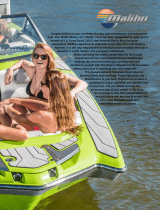 Malibu Boats 2017 Owner's manual
Malibu Boats 2017 Owner's manual
-
 Malibu Boats Wakesetter 24MXZ 2018 Owner's manual
Malibu Boats Wakesetter 24MXZ 2018 Owner's manual
-
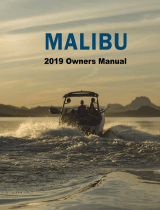 Malibu Boats 2019 Owner's manual
Malibu Boats 2019 Owner's manual
-
 Malibu Boats 2012 Wakesetter VLX Owner's manual
Malibu Boats 2012 Wakesetter VLX Owner's manual
-
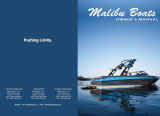 Malibu Boats 2012 Owner's manual
Malibu Boats 2012 Owner's manual
-
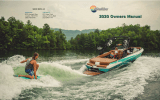 Malibu Boats 2020 Owner's manual
Malibu Boats 2020 Owner's manual
-
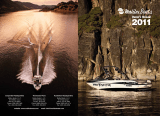 Malibu Boats Wakesetter VLX Owner's manual
Malibu Boats Wakesetter VLX Owner's manual
-
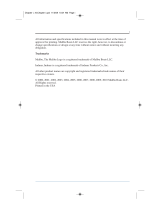 Malibu Boats 2010 Owner's manual
Malibu Boats 2010 Owner's manual
-
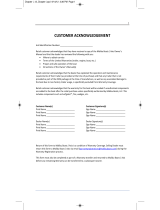 Malibu Boats Boat Owner's manual
Malibu Boats Boat Owner's manual
Other documents
-
 Axis Wake Research A22 Owner's manual
Axis Wake Research A22 Owner's manual
-
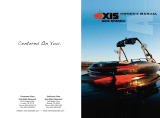 Axis Wake Research A22 Owner's manual
Axis Wake Research A22 Owner's manual
-
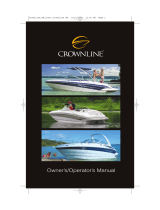 Crownline 180SS User manual
Crownline 180SS User manual
-
Yamaha XLT1200 WaveRunner 2003 Owner's/Operator's Manual
-
Yamaha XL700 WaveRunner 2003 Owner's/Operator's Manual
-
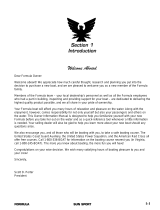 Formula SUN SPORT Owner's manual
Formula SUN SPORT Owner's manual
-
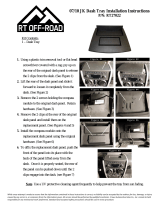 Crown Automotive RT27022 Installation guide
Crown Automotive RT27022 Installation guide
-
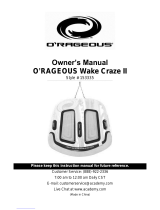 O'Rageous Wake Craze II Owner's manual
O'Rageous Wake Craze II Owner's manual
-
Sea Ray 2007 200 SUNDECK Owner's manual
-
Sea Ray 205 Sport Owner's manual





























































































































































































































